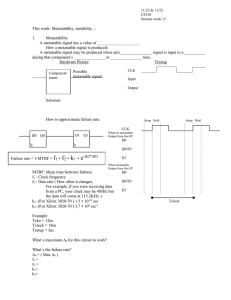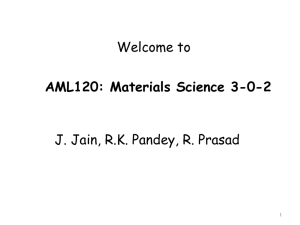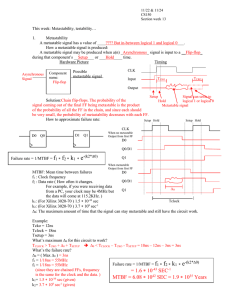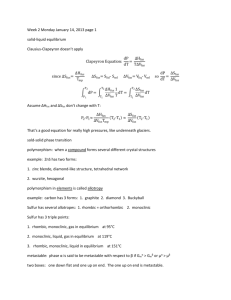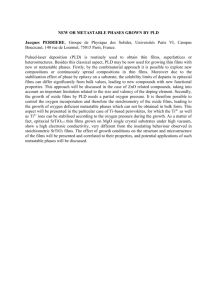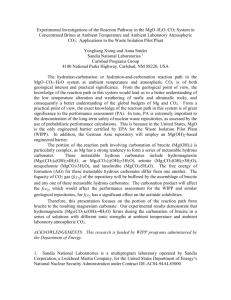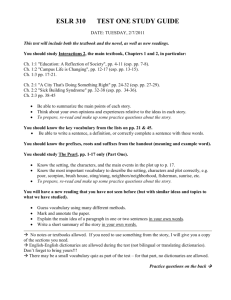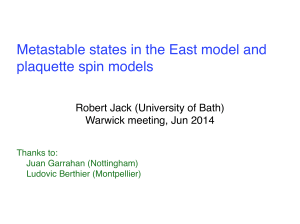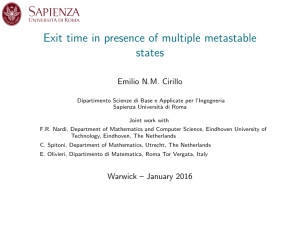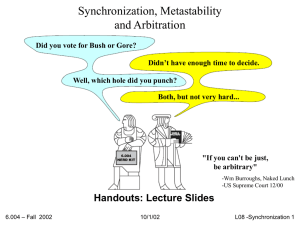High-accuracy calculation of metastable states of the
advertisement
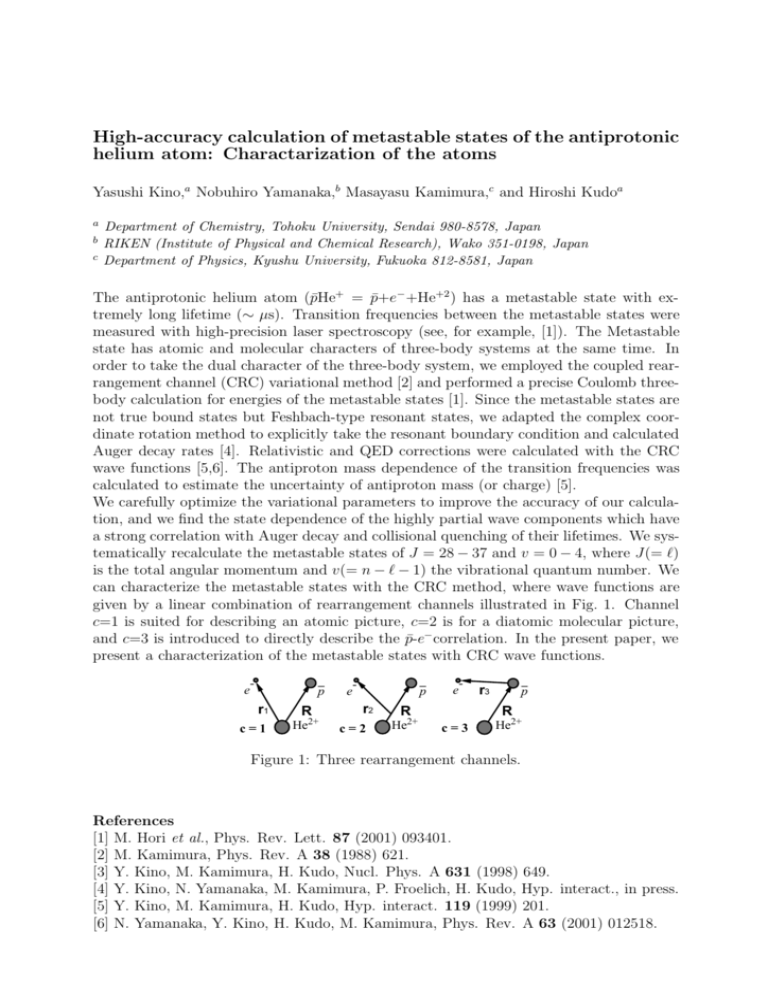
High-accuracy calculation of metastable states of the antiprotonic helium atom: Charactarization of the atoms Yasushi Kino,a Nobuhiro Yamanaka,b Masayasu Kamimura,c and Hiroshi Kudoa a b c Department of Chemistry, Tohoku University, Sendai 980-8578, Japan RIKEN (Institute of Physical and Chemical Research), Wako 351-0198, Japan Department of Physics, Kyushu University, Fukuoka 812-8581, Japan The antiprotonic helium atom (p̄He+ = p̄+e− +He+2 ) has a metastable state with extremely long lifetime (∼ µs). Transition frequencies between the metastable states were measured with high-precision laser spectroscopy (see, for example, [1]). The Metastable state has atomic and molecular characters of three-body systems at the same time. In order to take the dual character of the three-body system, we employed the coupled rearrangement channel (CRC) variational method [2] and performed a precise Coulomb threebody calculation for energies of the metastable states [1]. Since the metastable states are not true bound states but Feshbach-type resonant states, we adapted the complex coordinate rotation method to explicitly take the resonant boundary condition and calculated Auger decay rates [4]. Relativistic and QED corrections were calculated with the CRC wave functions [5,6]. The antiproton mass dependence of the transition frequencies was calculated to estimate the uncertainty of antiproton mass (or charge) [5]. We carefully optimize the variational parameters to improve the accuracy of our calculation, and we find the state dependence of the highly partial wave components which have a strong correlation with Auger decay and collisional quenching of their lifetimes. We systematically recalculate the metastable states of J = 28 − 37 and v = 0 − 4, where J(= ) is the total angular momentum and v(= n − − 1) the vibrational quantum number. We can characterize the metastable states with the CRC method, where wave functions are given by a linear combination of rearrangement channels illustrated in Fig. 1. Channel c=1 is suited for describing an atomic picture, c=2 is for a diatomic molecular picture, and c=3 is introduced to directly describe the p̄-e− correlation. In the present paper, we present a characterization of the metastable states with CRC wave functions. e p r1 c=1 R He2+ e p r2 c=2 e R He2+ r3 p R c=3 He2+ Figure 1: Three rearrangement channels. References [1] M. Hori et al., Phys. Rev. Lett. 87 (2001) 093401. [2] M. Kamimura, Phys. Rev. A 38 (1988) 621. [3] Y. Kino, M. Kamimura, H. Kudo, Nucl. Phys. A 631 (1998) 649. [4] Y. Kino, N. Yamanaka, M. Kamimura, P. Froelich, H. Kudo, Hyp. interact., in press. [5] Y. Kino, M. Kamimura, H. Kudo, Hyp. interact. 119 (1999) 201. [6] N. Yamanaka, Y. Kino, H. Kudo, M. Kamimura, Phys. Rev. A 63 (2001) 012518.
